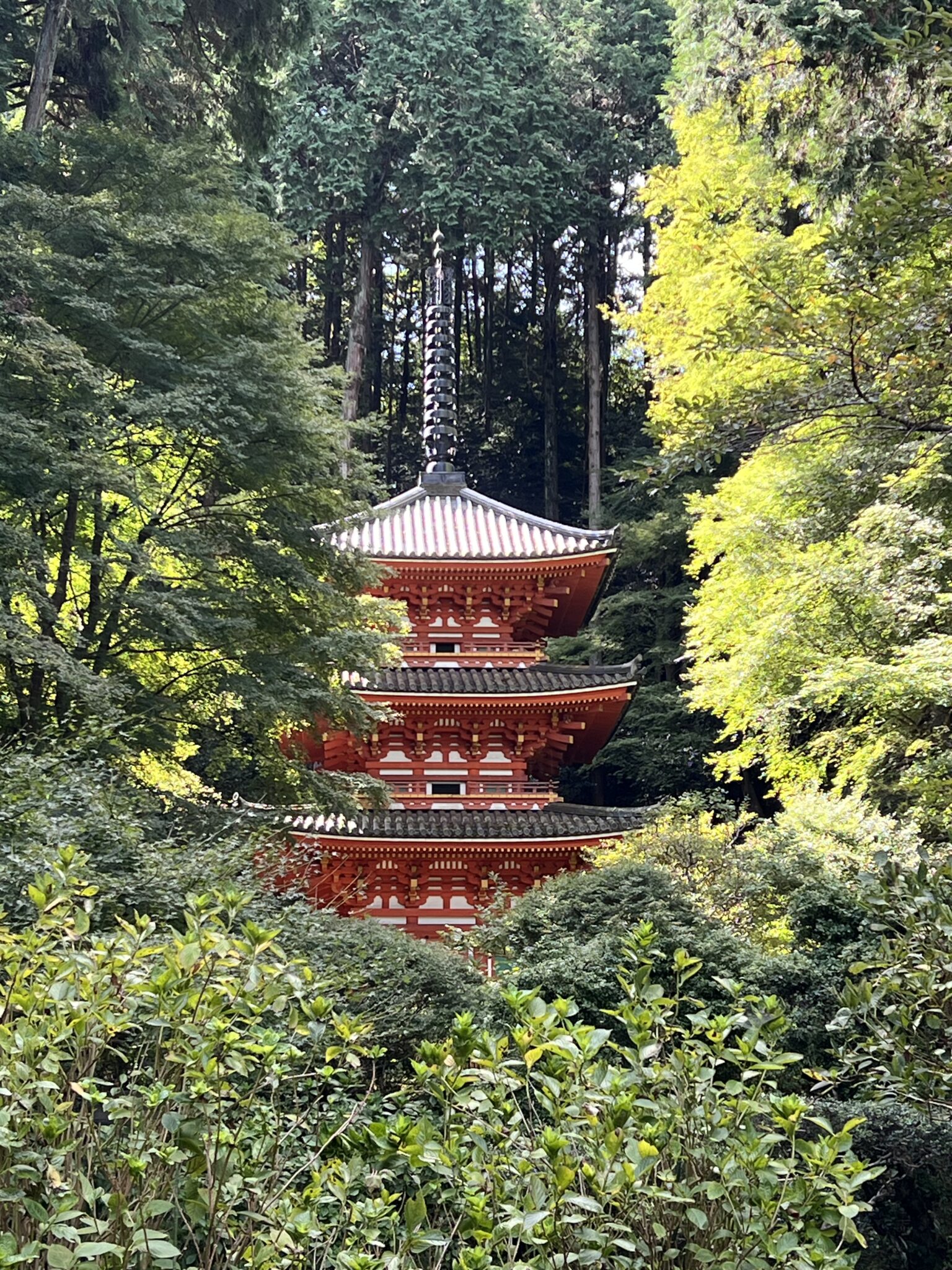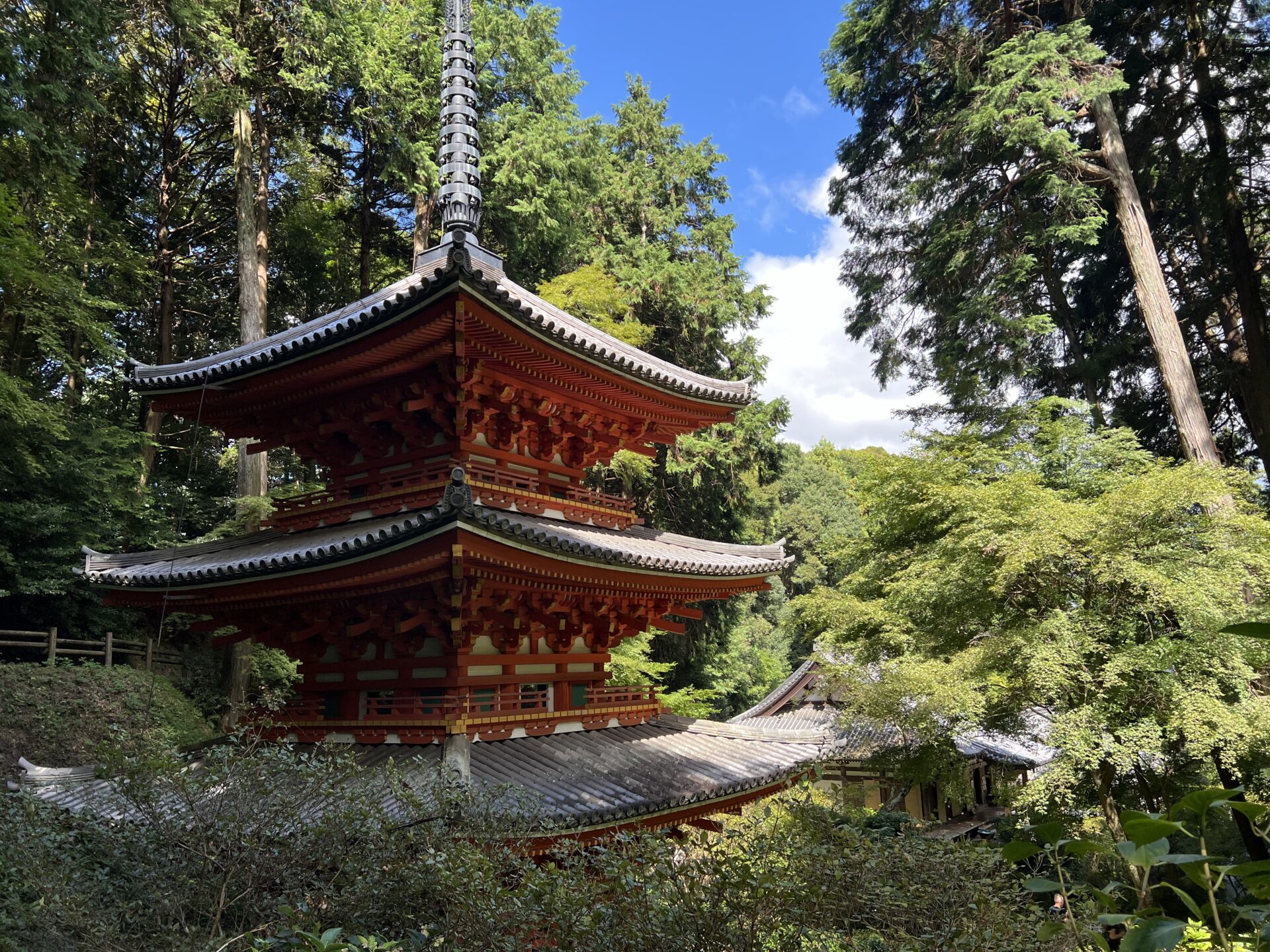It had been a year since my trip to Southern Yamashiro, centered around Joruriji Temple in 2023, when I visited again. During that previous visit, I came across a group of elderly hikers who planned to walk to the scattered temples in the Southern Yamashiro region from here. I thought it seemed like a wonderful idea—hiking from Joruriji, passing by stone Buddhas and cliff-carved statues, especially in the right season. At the time, I intended to return during hydrangea season, but once again, I found myself here in early autumn, a time when there aren’t many flowers in bloom.
As I wandered around, I noticed a group of European tourists with a French guide explaining the temple grounds. I was quite surprised to see that inbound tours had even reached Iwafune Temple! I couldn’t help but marvel at how eager Europeans always seem to be the first to explore such off-the-beaten-path places.
As usual, there were a few stalls near the gate selling vegetables and chili peppers, maintaining the same relaxed, welcoming atmosphere. Southern Yamashiro is home to many temples that bring a sense of peace and tranquility to the heart.
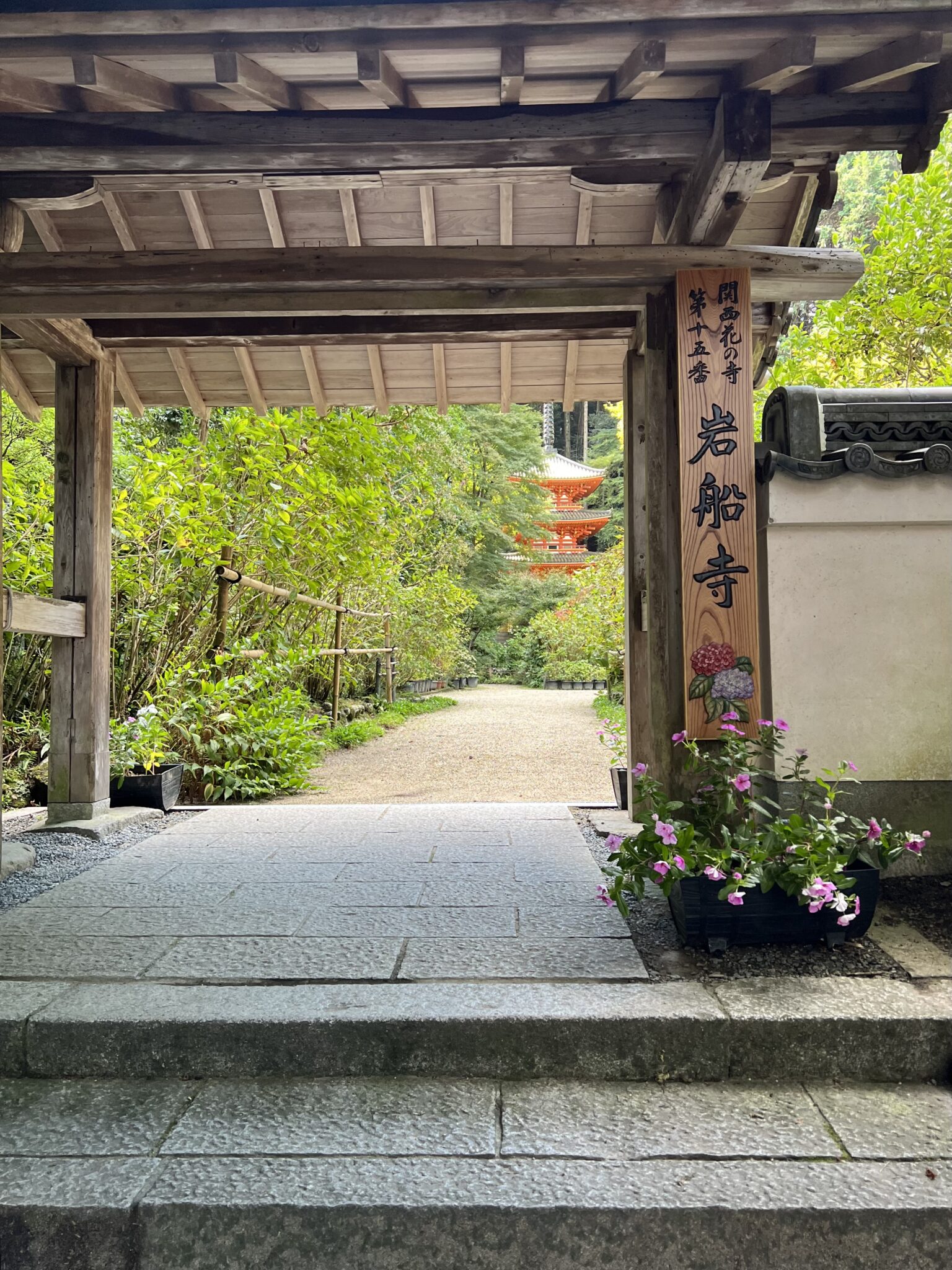
History

The area around Gansen-ji Temple, in the Kizugawa region, has long been an important crossroads connecting Nara, Kyoto, and Omi. During the reign of Emperor Shomu, the capital was temporarily moved from Heijokyo to Kuni-kyo in Southern Yamashiro, and it seems that this area served as a retreat for monks from Kofukuji and Todaiji Temples. Records and statues suggest that mountain ascetic practices were also popular here during the Muromachi period.
Gansen-ji Temple has a document known as the “Gansen-ji Temple Origin” which states that in 729 (the first year of the Tenpyo era), Emperor Shomu ordered Gyoki, a monk residing at Zengonji Temple in Narikawa, Yamato Province, to build an Amida Hall, marking the temple’s beginnings. However, due to modifications made in later periods, the exact details are unclear. What is certain is that the existing seated statue of Amida Nyorai (Amitabha Buddha) bears an inscription from 946 (the ninth year of the Tengyo era), indicating that the temple was once home to an impressive main hall enshrining a Buddha statue over 2.4 meters tall.
Gansen-ji Temple reached its peak in the mid-Kamakura period, though it was burned down multiple times, including during the Jokyu War. It was later rebuilt during the Kanei era (1624–1644) through donations from Tokugawa Ieyasu and Hidetada.
When a sufficient number of visitors gather, the temple’s chief priest provides detailed explanations about the history and significance of the area, making it easier to understand. If you have the chance, we highly recommend listening to the priest’s talk.
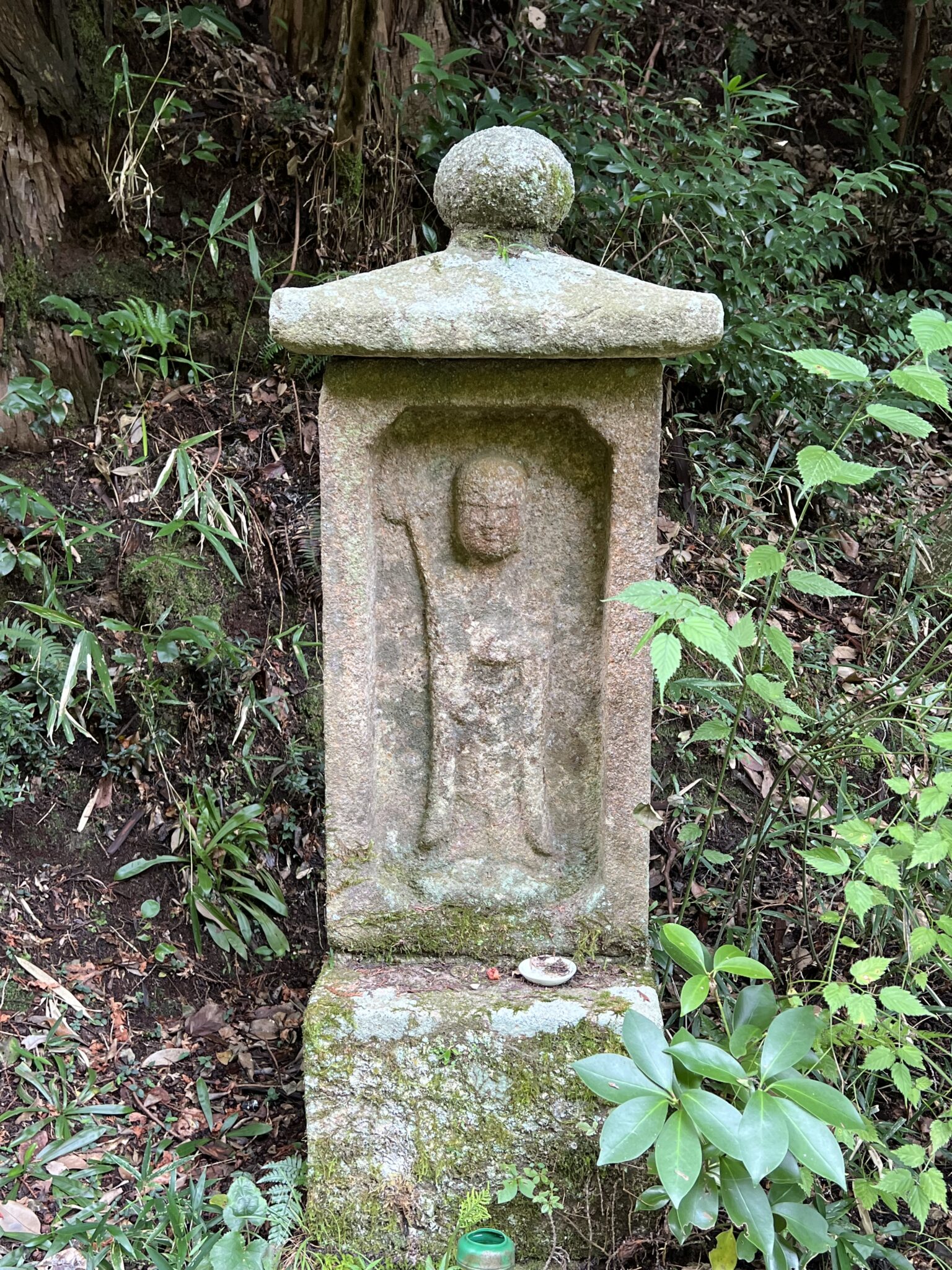
Main Hall
After climbing the stone steps, completing the temple admission process, and passing through the main gate, you’ll find a white path of pebbles flanked by greenery, with a red three-story pagoda visible in the distant shade of the trees. The temple grounds, visited in the morning, are filled with lush greenery, creating a serene atmosphere. The air is heavy with humidity, giving the surroundings a tranquil, moistened charm. A cool breeze flows through, a welcome change from the scorching heat of just a few days ago. Hostas bloom here and there at your feet.
A short walk brings you to the main hall on the right, where you can pay your respects to the Buddha. Inside the hall’s calm and peaceful atmosphere sits an impressive seated statue of Amida Nyorai (Amitabha Buddha) from the early Heian period, accompanied by the Four Heavenly Kings. The Buddha’s gentle, compassionate expression is mesmerizing, exuding a sense of warmth and embrace. After offering prayers to Amida, you can walk clockwise around the hall, viewing various temple treasures on display, including a magnificent statue of Samantabhadra Bodhisattva riding an elephant.
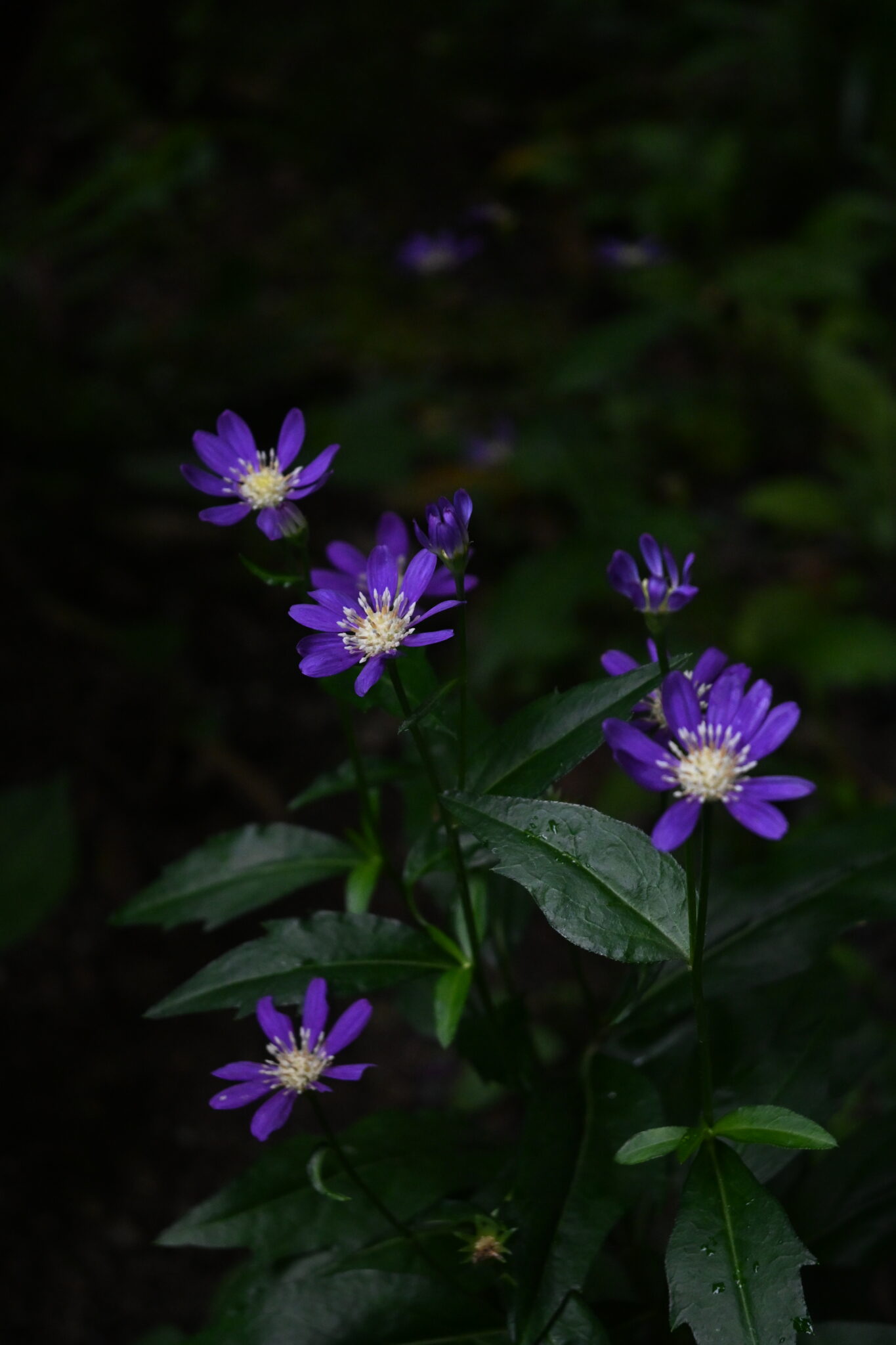
Temple Ground
In the lush, verdant temple grounds lies the “Aji Pond” at the center. Walking counterclockwise around the pond and ascending a little, you will find a three-story pagoda from the Muromachi period, which closely resembles the one at Joruriji Temple. Continuing counterclockwise, you’ll come across various impressive stone statues and towers, including a 13-tier stone pagoda (an Important Cultural Property), a standing statue of Fudo Myo-o in a stone chamber (an Important Cultural Property), a Jizo Bodhisattva, and a five-ring stone pagoda (also an Important Cultural Property).
This area of Southern Yamashiro is known for its many cliff-carved Buddhas, created by skilled stonemasons and ascetic monks. Among them, the Kamakura-period five-ring pagoda here is one of the largest and most magnificent I have ever seen. It is said to be the grave of Taira no Tomochika, the head monk of Todaiji Temple.
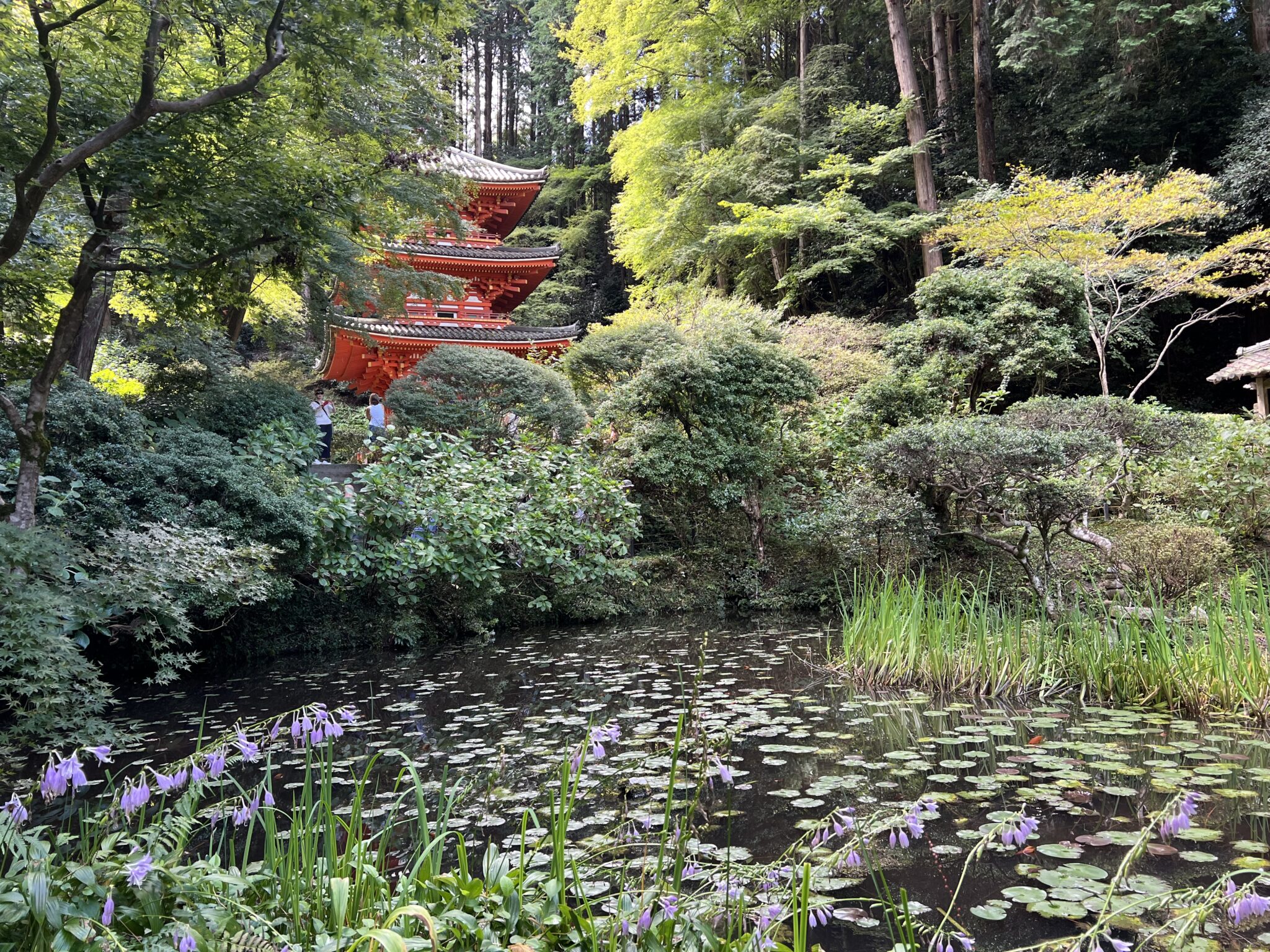
Main Image
Seated Statue of Amida Nyorai (Important Cultural Property)
This is a precious Joroku Buddha (a large statue over 3 meters tall) from the 10th century, representing the Heian period. An ink inscription believed to date from 946 (the ninth year of the Tengyo era) remains inside the statue. As one of the oldest examples of a single Amida Buddha depicted in the meditation mudra (Jōin), it holds significant historical and cultural value.
Other Treasures
Statue of Samantabhadra Bodhisattva Riding an Elephant (Important Cultural Property)
11th century?
This statue of Samantabhadra Bodhisattva, riding an elephant, is said to be the guardian deity for those born in the Year of the Dragon or Snake. Since this year is the Year of the Dragon, I was eager to pay my respects. However, the statue has been sent to the Nara National Museum for restoration, so I could only view a photograph of it.
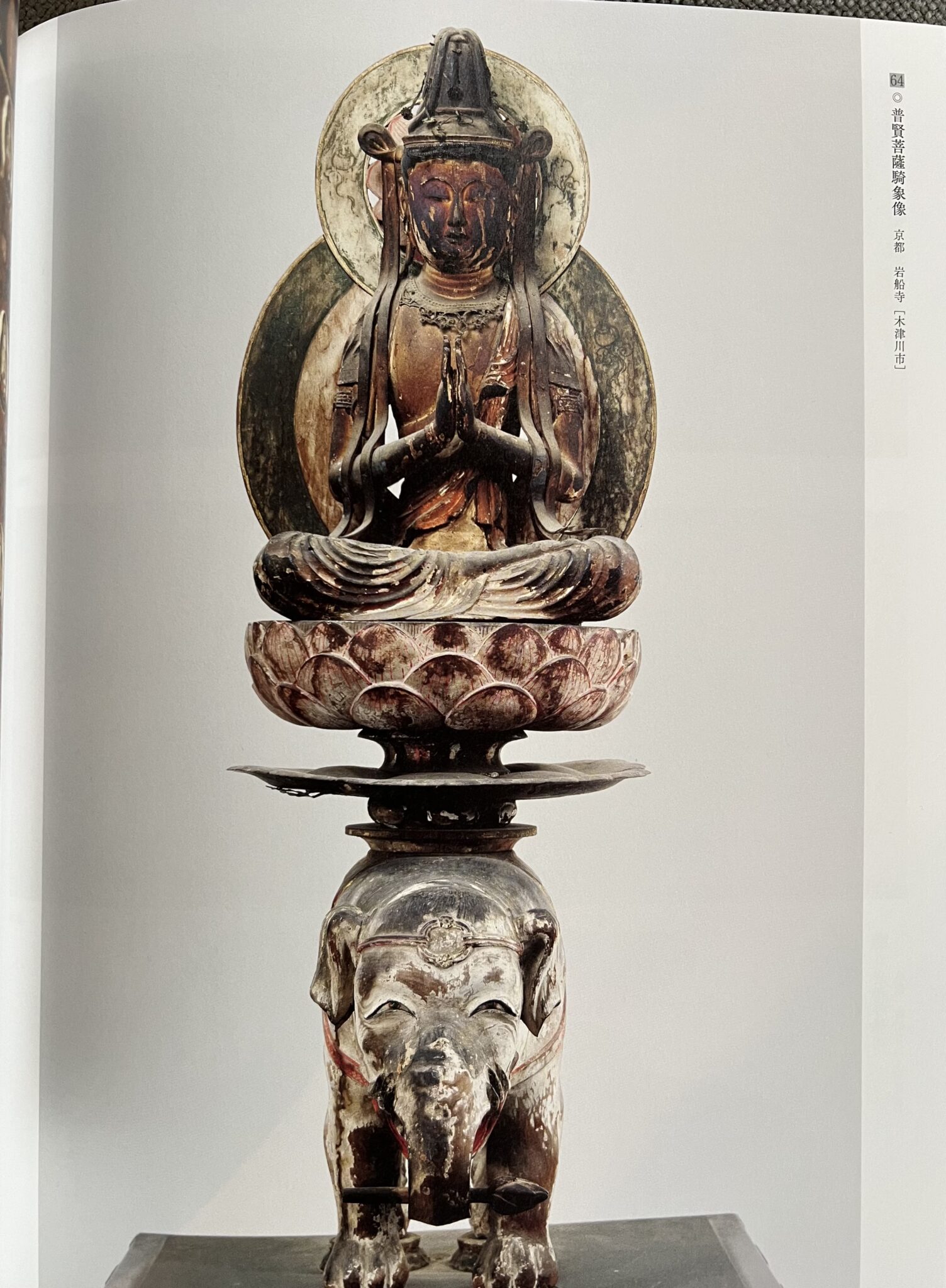
Three-Story Pagoda (Important Cultural Property)
Muromachi Period
Climbing the small hill in the garden provides a clear view of the upper part of the three-story pagoda. The contrast between the blue sky, green surroundings, and the pagoda’s red color is stunning.
13-Tier Stone Pagoda (Important Cultural Property)
Muromachi Period
Five-Ring Stone Pagoda (Important Cultural Property)
Kamakura Period
Stone Chamber Fudo Myo-o Statue (Important Cultural Property)
Kamakura Period

Flowers
Spring: Plum blossoms, Cornus flowers, Cherry blossoms
Summer: Hydrangeas, Water lilies, Chinese bellflowers
Autumn: Autumn foliage
I’ve heard that the hydrangea season is particularly wonderful, so I’d like to visit during that time next time.
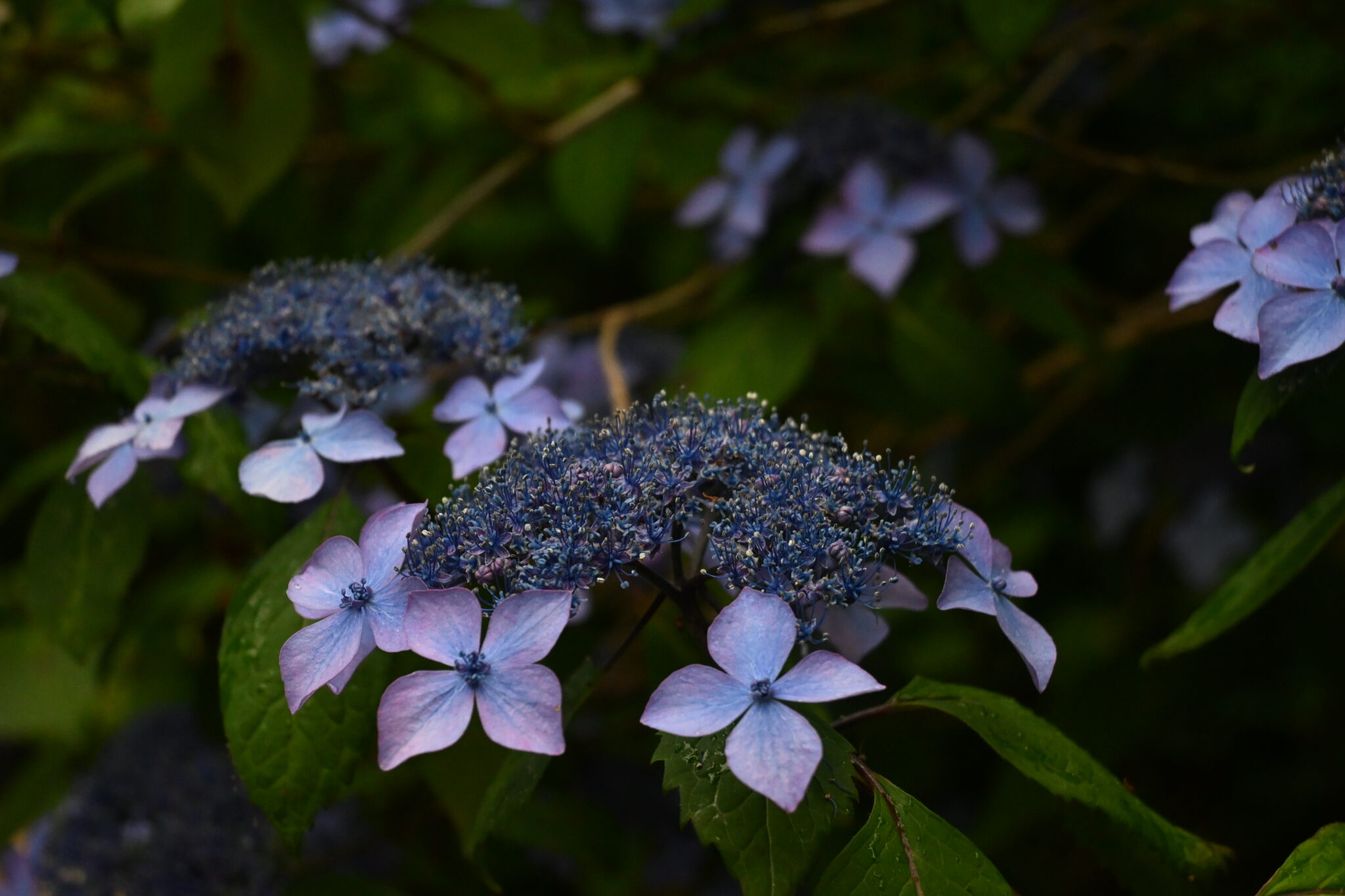
Extras
The shop immediately to the left after exiting the temple gate is a lovely place. Since I visited in autumn, I had mountain vegetable okowa (steamed sticky rice) and mushroom soup, both of which were delicious. They also sell sweets and other items. The handmade ichimi chili pepper seasoning made here was especially fragrant and tasty. I wanted to buy some, but they told me it’s not for sale, as they only make it for their family and the dining hall. If you’re visiting Iwafune Temple on an autumn weekend, I highly recommend stopping by.
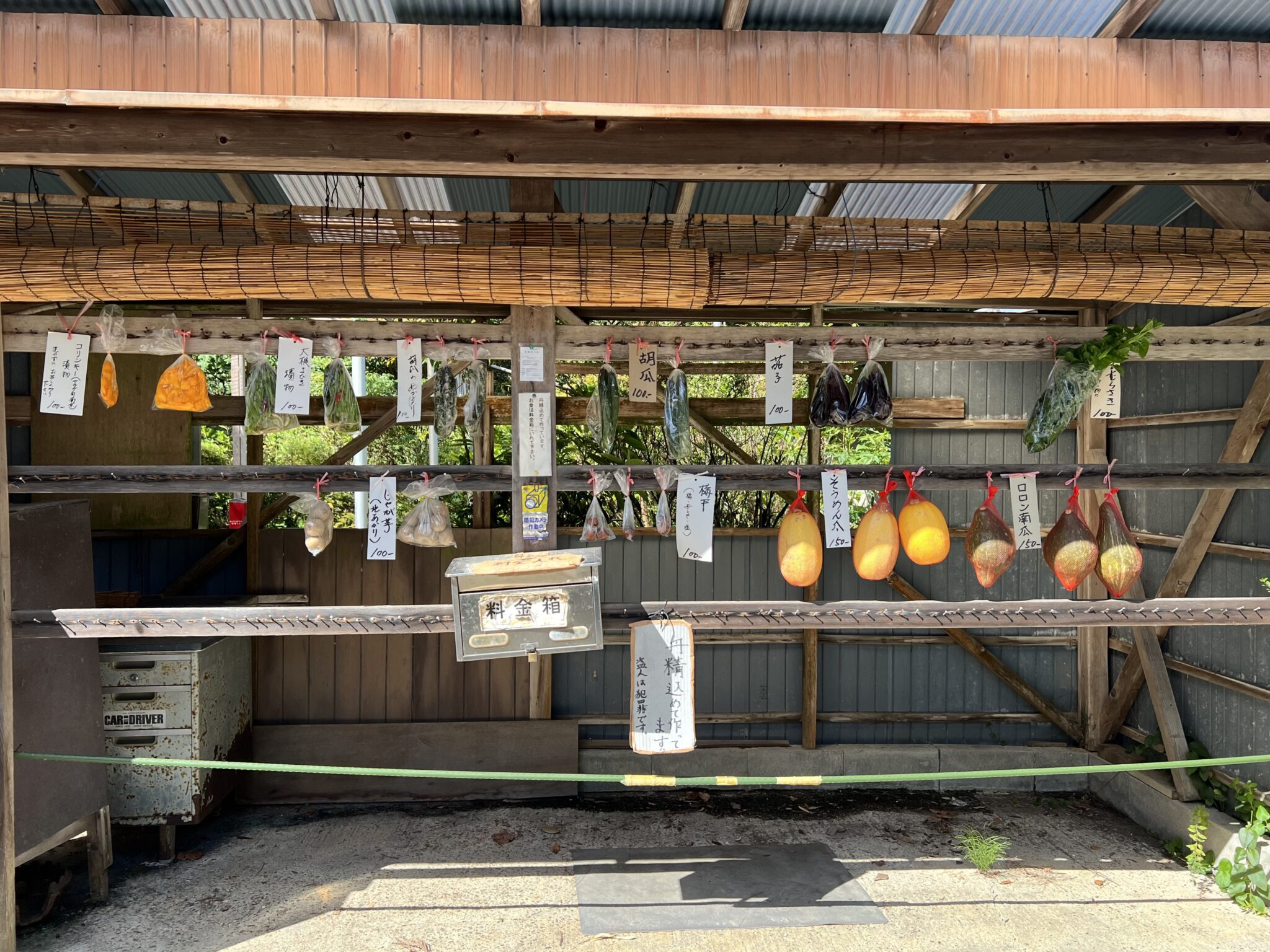
Access
In terms of efficiency, driving to Gansen-ji Temple is probably the best option. However, there is a bus stop right by the road after exiting the temple. The bus, called the “Kizugawa Ancient Temple Pilgrimage Bus,” operates seasonally. Since it’s a seasonal service, it may not always be available, but it’s still convenient as it offers a direct route from JR Nara Station or Kintetsu Nara Station.
—From JR Kansai Main Line Kamo Station, take the Kizugawa City Community Bus (bound for Kamoyama-no-ie) for about 16 minutes and get off at ‘Gansen-ji’
— About 30 minutes by Nara Kotsu Bus (Kizugawa Ancient Temple Pilgrimage Bus from the “Tea of Kyoto” route)
For reference, in 2023, the bus operated on weekends and holidays from July to early October, and from October through November, but 2024 Fall schedule has not been confirmed.
